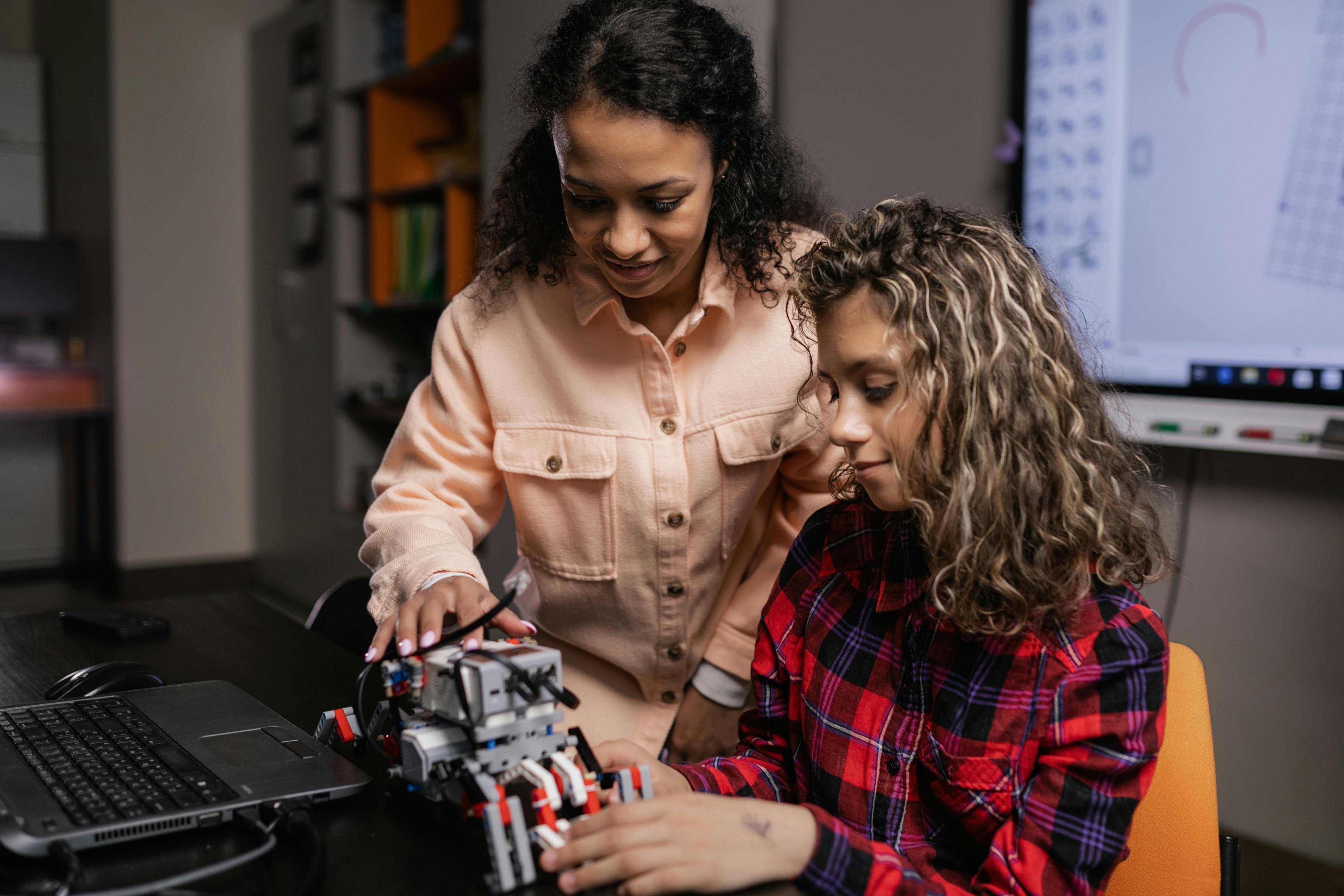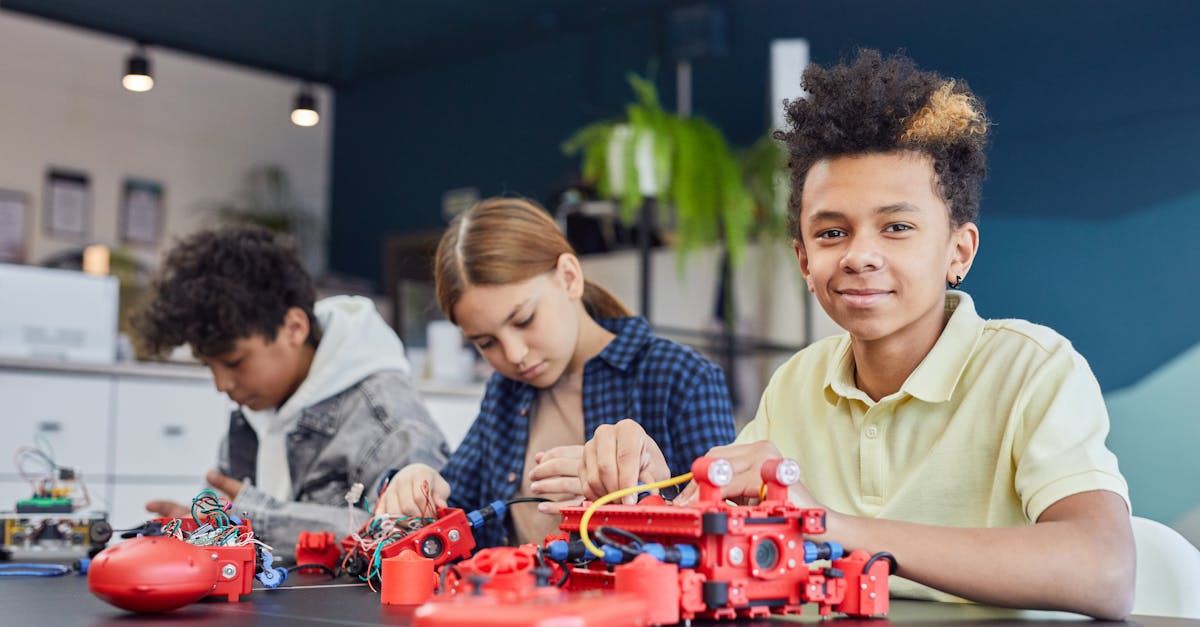Introduction: The Future of Education with AI and Robotics
For the educational industry, 2024 is expected to be a watershed year where robotics and artificial intelligence (AI) are integrated to great effect. These technologies’ developments and accessibility promise to completely reimagine how education is provided, improving the effectiveness, individualization, and enjoyment of teaching and learning. In particular, the influence of AI and robotics is examined in this article along with the trends that are about to transform education.
Lowering Entrance Barriers for Robotics and AI in Education by 2024
High expenses and difficult implementation procedures were major obstacles in the way of the integration of AI and robotics in education for a very long time. These obstacles, meanwhile, are progressively disappearing as technology advances. Hardware and software advancements together with new business models are making it easier and more common to use these intelligent devices in educational contexts.

Particularly, more educational institutions, irrespective of size or funding, can now use these cutting-edge tools because AI and robotics technology is becoming more widely available. By 2024, this democratization of technology should have significantly increased the use of robotics and artificial intelligence at colleges and universities. Educators should therefore anticipate more customized learning opportunities, higher student involvement, and better academic results.
Turnkey Education Solutions Quicken Implementation
The difficulties of programming and system integration have historically made the adoption of AI and robotic technology in education expensive up front. Many times, these difficulties made the initial expenses prohibitive for many institutions.
Still, things are quickly shifting as turnkey educational solutions become available. User-friendly design of these ready-to-use devices removes the requirement for a great deal of technical knowledge. By 2024, turnkey educational solutions will make it easier to implement interactive learning platforms, robotic classrooms, and tutoring systems driven by AI. Now within reach are applications including AI-driven evaluations, real-time feedback systems, and automated lesson planning, which present hitherto unheard-of chances for educational innovation.
School and university use of these technologies is also becoming easier thanks to collaborations with IT corporations and specialist platforms. With autonomous deployment platforms backing them, out-of-the-box solutions cut setup times and expenses so teachers can concentrate on teaching rather than technology. These developments guarantee that universities may quickly include robotics and AI into their courses, improving the educational process for students.

Enhancements in Learning Driven by AI
A digital learning ecosystem is emerging from the combination of AI and educational technologies. Artificial intelligence (AI) will play a bigger part in education by 2024 when it will provide customized learning experiences that adjust to the demands of each learner. Massive data analysis by AI-powered systems can provide information about student performance, point up knowledge gaps, and suggest customized learning routes.
Artificial intelligence has many advantages in the classroom. Adaptive learning systems, for example, can modify the level of information according to a student’s development, so they are kept challenged without feeling overburdened. Furthermore automating administrative chores, AI-driven tools allow teachers to interact with pupils more directly. Further improvements in the flexibility and efficacy of teaching resources are to be expected as AI technology develops.
AI-powered educational solutions not only enhance student performance but also quicken the creation and distribution of new instructional resources. Machine learning algorithms enable teachers to provide more dynamic and interesting material that is suited to a variety of learning styles. This flexibility places artificial intelligence (AI) as a vital element in upgrading and improving education to be more accessible and successful.
Redefining the AI and Robotics Classroom Experience
Artificial intelligence and robotics in education are being pushed by a number of societal and economic reasons. Global changes have brought attention to the necessity of robust and adaptable educational systems, as the shift to remote learning during the epidemic. Further driving schools to look at creative solutions are growing educational expenses and the need to raise learning results.
Statistics indicate that more and more educational establishments are realizing the promise of robotics and artificial intelligence. In 2024, the use of these technologies will allow colleges and universities to raise the standard of instruction, increase operational effectiveness, and promote diversity. Robots can help with special education and administrative responsibilities, thereby making sure every kid gets the help they need.
Additionally to optimizing their resources, educational institutions can design more interesting and productive learning environments by integrating AI and robotics. The potential of these technologies is to turn conventional classrooms into dynamic environments that meet the requirements of every student and promote a more comprehensive and flexible approach to education.
Summary
In conclusion, in 2024 the combination of robotics and artificial intelligence will completely change education by providing hitherto unheard-of chances to customize learning, raise participation, and raise results. When these technologies are more widely available, educational institutions will be better able to address the issues of the contemporary world and get students ready for the future. Adoption of robotics and AI promises to raise the bar for educational excellence as well as revolutionize the classroom environment.





